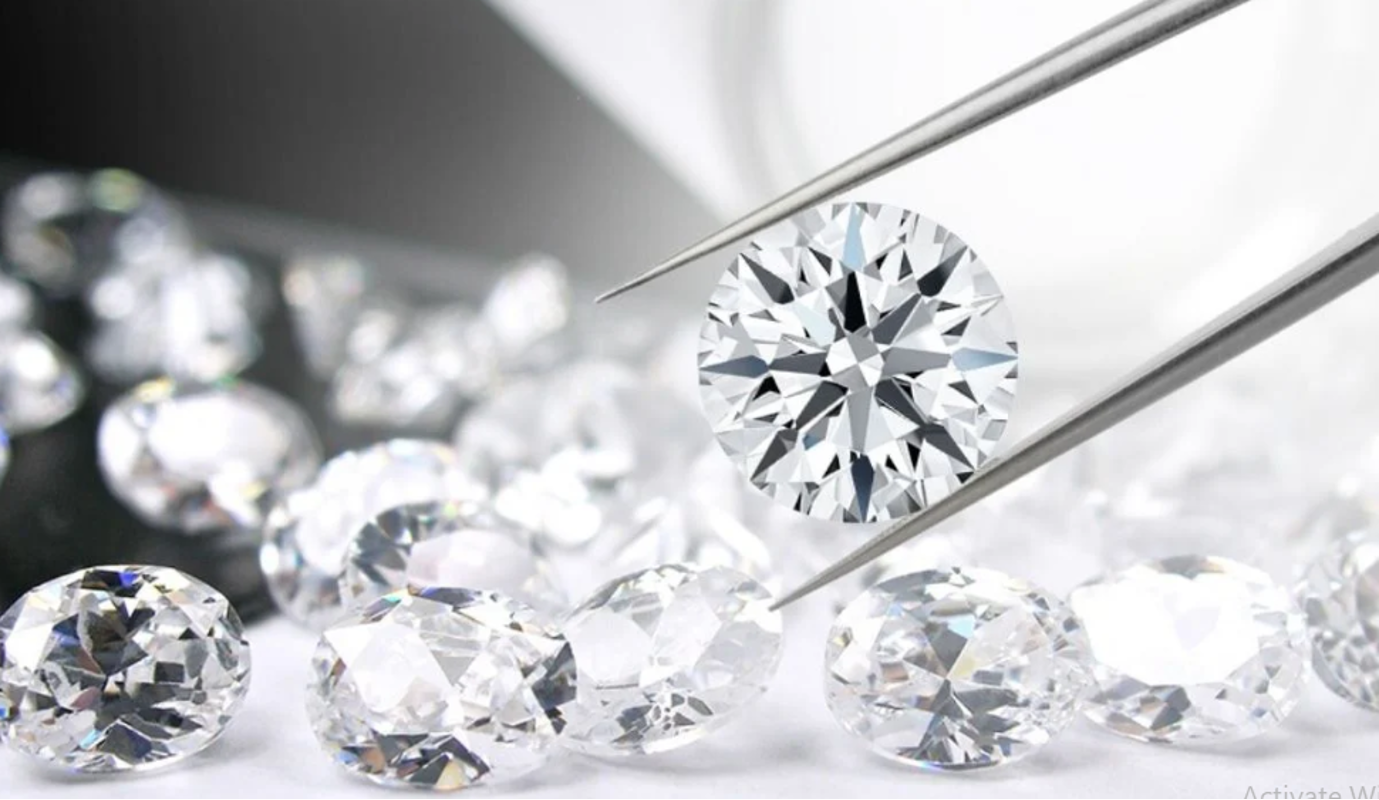
The transformation of raw carbon to a sparking diamond is almost modern day alchemy. Lab-grown diamonds now occupy the spotlight and provide the same dazzling beauty as mined ones but have the ethical and sustainable benefits. Businesses such as Rare Carat are at the helm of such a revolution by bringing buyers directly to a fine-cut stone and handling all aspects of the diamond-purchasing experience. What in nature took billions of years to accomplish is now produced in world-class labs, with no compromise with quality, sparkle or brilliance.
1. The Spark of Innovation: Why Lab-Grown Diamonds Exist
The intention of producing diamonds in laboratories is based on the goal of recapturing the beauty of nature and lending sustainability and accessibility to gemstones. In contrast with simulants like cubic zirconia which are chemically, physically, and optically distinguishable, lab-grown diamonds are ostensibly chemically, physically and optically identical to mined diamonds.
The reasons why consumers would take lab-grown diamonds:
- No mining, no conflict.
- Responsibility to the environment: The level of impacting the environment decreased significantly.
- Being a good value: More and bigger stones that are of higher quality and at a better price.
- Customization: Increased control over cut, color and clarity.
During the last few years, digital shopping platforms such as Rare Carat have also enabled people to shop safely lab-grown diamonds, providing visibility and expert advice into their purchase enabled by artificial intelligence.
2. Science of the Sparkle
Man-made diamonds begin with carbon which is also the source of diamond in nature. There are two main processes to convert carbon into shining gemstones, both within the laboratory: High Pressure High Temperature (HPHT) and Chemical Vapor Deposition (CVD).
3. HPHT Method: Mimicking the Earth’s Core
The HPHT process imitates conditions found several kilometers beneath the earth in its mantle. A tiny seed of diamond is put in a cell and subjected to:
- Temperatures: Up to over 1,500 o C
- Pressures: More than 1.5 million pounds per square inch
- Carbon source: Graphite or carbon containing compounds
In weeks, the carbon atoms settle around the seed and shape a crude diamond crystal. HPHT is particularly successful on some fancy-colored stones, and is often used to create extraordinarily clear diamonds.
4. CVD Concept: Growing diamonds atom by atom
A newer development is CVD. It starts with a diamond seed in a vacuum chamber that is full of element rich gases such as methane. The gas is energized through microwaves or lasers, and the molecules break apart so that the carbon atoms attach to the seed layer, molecule by molecule.
The advantages of CVD:
- Additional control of growing conditions
- Less metallic inclusions than in HPHT
- Great in manufacturing large quality stones
CVD is preferred over other diamond-growing methods by many high-end jewelers (such as those featured in Rare Carat) because of its meticulousness and economy.
5. Refining Rough Crystals into beautiful Gems
After being cultivated, the lab diamonds do not have any resemblance to the shiny jewelry items you find in shops. They pass through various phases of conversion:
- Planning & Mapping- Sophisticated imaging software informs upon how the rough stone should be cut to be as brilliant as possible and with minimal wastage.
- Cutting & Faceting The master cutters then cut or shape the diamond into any fashion; round, princess, or emerald and every single facet reflects light perfectly.
- Polishing- A final cleaning of the surface of the diamond is done to make it perfect in appearance and produce the lustrous finish that characterizes quality gemstones as being mirror-like.
This painstaking technique is the border between coarse science and eternal beauty.
6. Grading and Certification
All laboratory-grown diamonds are graded identical to mined diamonds-by the same four Cs–Cut, Color, Clarity, and Carat Weight. The stones are evaluated and certified by the independent gemological labs like GIA and IGI.
One of the most transparent players available in the market, Rare Carat takes this experience a notch higher by providing AI-based price scoring of diamonds alongside free reviews by certified gemologists so that consumers can know both the worth and grade of the diamond they buy.
7. Merits of the LGDs Posted.
Lab-grown diamonds are not merely economical, but rather a host of advantages that appeal to contemporary ethics and culture.
Key Advantages:
- Sustainability: Reduced environmental impact.
- Affordability: 30140% more affordable than mined diamonds.
- Ethics: total conflict free sourcing.
- Innovation: Capacity to produce fancy colors or special cuts more simply.
8. Beyonds science: The rare carat advantage
Besides stocking more than a million diamonds and gemstones sourced through audited dealers, Rare Carat has changed the shopping process through the integration of technology and leading-edge customer service.
Benefits to customers:
- Money-back guarantee of 30 days
- Free insured delivery and returns
- Free 1-year resizing excluding eternity bands)
- Lifetime warranties available
- Stellar 4.9 stars ratings Trustpilot and Google Business
A combination of the marvels of AI, the experience of experts, and a full-service package means that the process becomes a smooth search to sparkle.
9. Trends Driving Lab-Grown Diamond Popularity
The new wealthy consumers are interested in being authentic, personalized and responsible consumers. Lab-grown diamonds fit these expectations to a T.
Top Trends:
- Custom Jewelry: Custom made engagement rings, heirloom (based).
- Sustainable luxury: focusing on environmentally sustainable materials and eco sourcing.
- Colored stones: Pink, blue and yellow lab-grown diamonds are more affordable than natural colored diamonds.
10. The Future: Romance and Technology
Improvements in diamond-growing technology will further expand the limits, making the stones even larger, with even more accurate cuts and new designs. With the upcoming mass adoption of these gems, the idea of lab-grown will transition from being a technological wonder to being a posh expectation.
The entire process of creating lab-grown diamonds is a genuine combination of art and brilliant science combined with contemporary principles, starting with the first spark of carbon and ending in a dazzling show under a jewelry case. And when there is reliability about quality, transparency and beautifulness in platforms in which shoppers use- they can rest assured that the sparkle they carry has a meaning as well as being perfectly executed.




